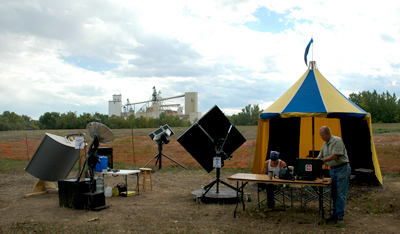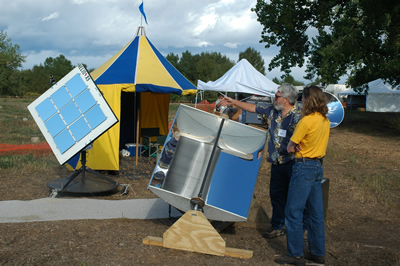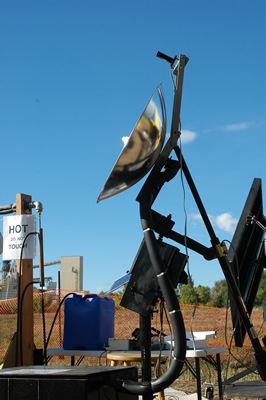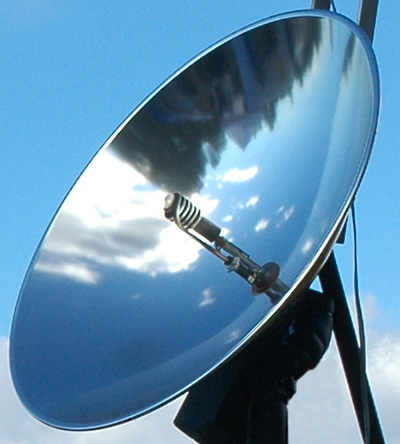Taking the show on the road.
Once again we had the opportunity to attend the Rocky Mountain
Sustainable Living Fair, a splendid fall festival held in Northern Colorado
and organized by the Rocky Mountain Sustainable Living Association. Kellie Falbo,
the fair director, set us up with another great
sunny spot surrounded by friendly people and bright minds.
Like last year,the fair was a smashing success! It was so busy that we barely got a chance to get around to see all of the wonderful booths and goodies to be had. The atmosphere was festive, the
music was jammin', the vendors were many, and the conversations were inspiring.
I saw many old friends and met lot of new ones.
A hearty thanks to everyone who came by to see
our inventions.
It's encouraging to see how many people are beginning to believe in the power of the sun.
 |
Last year we had a great spot to set up our exhibits at the fair. This year Kelly set us up with an even better spot! It was a good thing too, because this year we had even more solar toys to show off.
We had a heliostat, parabolic dish collector, parabolic trough collector, and a solar tracking PV panel that provides the electricity to power for the entire ehxibit and keep our laptop and cell phones charged.
|
 |
Here we're discussing a parabolic trough collector that we use for water heating or water distilling, basically a thermal collector.
On a full day of sun we can distill about one gallon of water. The reflector material is plexi-mirror wrapped around two parabolic plywood ends. It uses a single axis solar tracker. The collector pipe is painted black to absorb the heat from the sun, it also acts as the axis of rotation for the trough. |
 |
This is a prototype parabolic dish thermal collector. In this case we are using it to heat water. Parabolic dish collectors require dual-axis solar tracking. The collector element is a coil of 1/4"copper tube painted with high temperature black paint.
The tracking range of this dish is 300˚ which makes it great for higher latitudes, it also has a tilt back feature for low latitude operation where the sun seasonally goes from the northern to southern sky. |
 |
The collector element is a coil of 1/4"copper tube painted with high temperature flat black paint. Water or antifreeze is circulated through the collector coil and then through a copper heating coil in a holding tank. We can heat about 10 gallons of water from 60˚F to about 120˚F in 8 hours.
This dish collects about .28 square meters of sun. If it were 100% efficient it would produce about 280 watts of power or 956 BTUs per hour or 7648 BTU in 8 hours. In actuality it produces about 4980 BTU in 8 hours. This is a system efficiency of about 65%.
(Constants needed to do the math)
8.33 pounds per gallon of water
1 BTU raises 1 pound of water 1˚F
10 gallons of water
total of 83 pounds of water
60˚F temperature change = 4980 BTU
Watt-hours to BTU = Watts x 3.414
|
|




